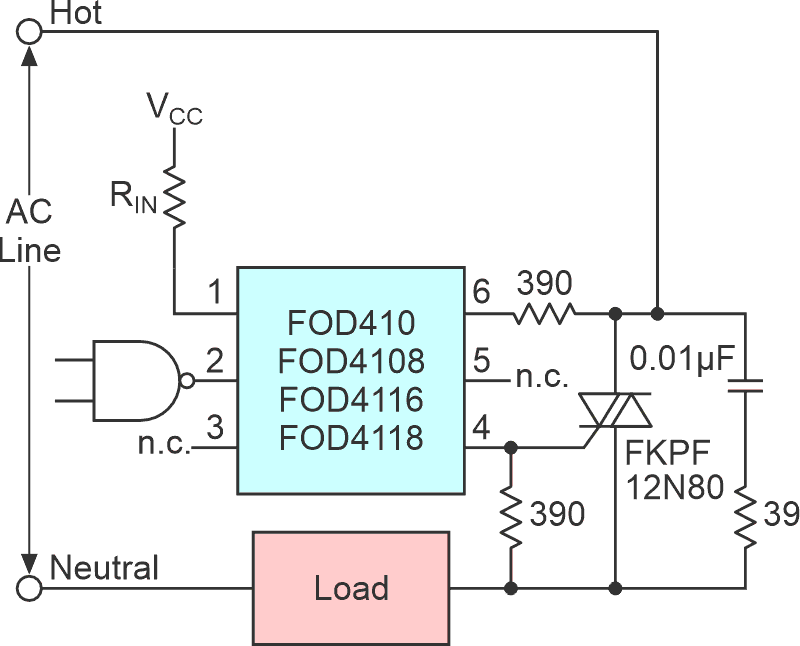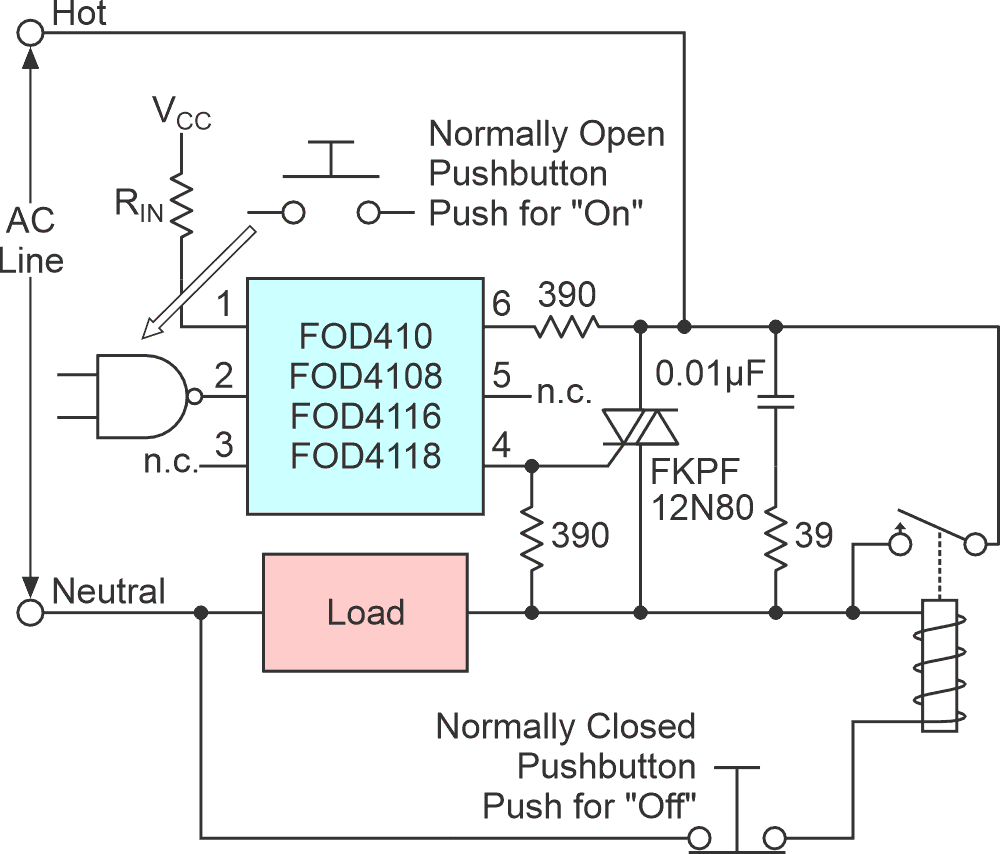Check out this link for On Semiconductor’s datasheet for a line of “Zero-Cross Optocoupled Triac Drivers.”
The ability to zero-cross when turning on AC line voltage to some loads may be advantageous. The following sketch in Figure 1 is a slightly simplified version of one circuit from the above datasheet.
 |
|
| Figure 1. | A simplified triac drive arrangement that will turn on AC line voltage to a load. |
The zero-crossover behavior of the triac and its driver operates nicely as the control input signal at pin 2 decides if AC is applied to the node or not. However, I had a somewhat different triac control requirement calling for two manually operated pushbuttons, one for turning AC power on and the other for turning AC power off while preserving the zero-crossover feature. Another issue was that at the required load power, the thermal burden to be borne by the controlled triac was much too severe.
The thermal burden on the triac was relieved as follows in Figure 2.
 |
|
| Figure 2. | The revised triac drive arrangement with a relay added such that when the pushbutton is pressed, the triac turns on AC to the load using its zero-crossover feature. |
A relay was added whose coil was tied in parallel with the load and whose normally open contacts were in parallel with the anode and cathode of the triac.
When the pushbutton was pressed “on,” the triac would turn on AC to the load using its zero-crossover feature and then the relay contacts were closed across the triac. When the relay contacts closed, the load current burden was shifted away from the triac to the relay. The triac only needed to operate through the duration of the relay’s closure time which in the case I was working on, was approximately 50 ms or just a little longer than three cycles of the input AC line voltage.
We had the zero-crossover benefits, and the triac never even got warm.
One normally-open pushbutton for turning on the load’s power was set up to drive the LED at the input of the optocoupler. You can come up with a million ways to accomplish that, so we’ll just leave that discussion aside.
Another normally-closed pushbutton was set up to remove the drive from the relay’s coil. With the first pushbutton assumed to be open and idle at that moment, and since the triac was already off, the second relay’s contacts would open up, and the load power would be turned off.